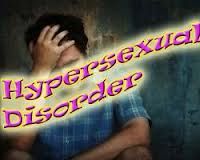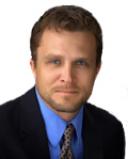Sex
The Hype in Hypersexual Disorder
Hypersexual disorder proposes to turn being gay back into a mental illness
Posted November 1, 2012

Hypersexual disorder - is it real, or is it an attack on sex?
UCLA researchers recently published the results of a study that provides initial analysis of the concept of hypersexual disorder. Hypersexual disorder is a proposed diagnosis that may be included in a section of APA’s forthcoming DSM-5 that is reserved for conditions that require further research. Hypersexual disorder is little more than a watered-down concept that emerged from the pop psychology term sex addiction, but has foregone all of the moralizing and subjective terms embedded in sex addiction, describing what is predominantly a problematic pattern of frequent sexual behaviors, where individuals “feel out of control.” Because the concept of sex addiction is intrinsically flawed, and consistently rejected by science and the medical establishment, the bare bones concept of hypersexual disorder is a last ditch effort to create a diagnosis. The media has seized this recent study as evidence that sex addiction is real, and everyone from Dr. Drew to the Huffington Post have claimed that it vindicates the concept of sex addiction. But, this study proves nothing about sex addiction, and in fact offers evidence that even the limited concept of hypersexual disorder is a socially-biased and potentially flawed concept.
The study was not in fact a true test of whether hypersexual disorder is a valid diagnostic concept, but merely whether the diagnostic criteria of this proposed diagnosis could be used consistently and accurately by clinicians. This study is only a preliminary effort to evaluate whether the criteria as proposed could be used – not whether this is a real, independent and truly valid disorder.
The only thing this study demonstrates about the diagnosis of hypersexual disorder is that the criteria can be used consistently if you are trying to create a diagnosis where even “normal” sexual behaviors can be a disorder, if someone is troubled by them, or if they trouble those around them. This used to be the case for the term "nymphomaniac," which Kinsey said was simply someone having more sex than the therapist. Now, instead of targeting women who liked sex as much as men, the new "hypersexual disorder" seems to target men who have more sex than the average man, or that's what this latest study shows.
Hypersexual disorder overwhelmingly targets males, in its criteria, and in the demographics of people diagnosed with the disorder. 95% of the hypersexual disorder group were male, compared to only around 60% of comparison groups. This makes it very clear that what is being targeted is not sexual problems, but socially-unacceptable sexual behaviors of males. Further, the males in the hypersexual group tend to be wealthy – half of the males with hypersexual disorder in this study make over $80,000 a year, compared to only 35% in the other groups. The proposed diagnosis is potentially creating a disorder to explain the problematic behavior of a privileged group. If a similar diagnosis pathologized poor African-American males, this would be clear evidence of bias and the effects of social stigma and discrimination, NOT a disorder in the men themselves. In other words, this pattern of findings suggests that the problems identified in hypersexual disorder may reflect the effects of social forces on different groups, NOT a mental disorder in these individuals.
More than three times as many of the participants with hypersexual disorder were gay or bisexual men, compared to the other groups in this study. This is not trivial. Hypersexual disorder already pathologizes male sexuality, and the heightened sexuality of gay and bi males suffers this attack even further. Hypersexual disorder turns being a gay or bisexual male into a disease. In the 70’s, being gay stopped being an illness. This disorder proposes to put it back. There are numerous groups who will use this medical support to attack homosexuality: Utah Senate candidate Jeremy Friedbaum is one example, who believes that homosexuality is a disease of sex addiction, and needs to be cured.
This study doesn’t compare the hypersexual disorder group to a normal population (community sample), and the authors defend this saying it is not a typical part of such a study. This is a glaring omission and weakness, as sex is a normative behavior – everyone has sex and it is normal to desire it. But hypersexual disorder proposes to define, among other things, how much sex is normal and how much sex is too much sex. To do so, it must be able to be distinguished from healthy people who have lots of sex, or have high libidos. Currently, this distinction is not clear. Hypersexual disorder must also be distinguished from other forms of disordered sexuality, such as pedophilia, exhibitionism and other paraphilias. Both of these investigations are critical, otherwise hypersexual disorder cannot be considered valid and clinically useful.
Finally, the authors include a very revealing comment that demonstrates this study was limited by extreme sample bias: “the raters reported that most patients had prompt and decisive responses to the diagnostic questions. In part, this suggests that by the time hypersexual patients begin treatment at a specialty clinic, they were fully aware of the breadth of their dysfunction, making diagnosis clear and definitive.” A significant part of the sex addiction culture is an embracing of the sexual addiction identity. As clients enter or are referred to sex addiction clinics, steeped in the sex addiction philosophy, they are told to self-identify as sex addicts, and told how and where their behaviors come from. Those clients who reject that identity often don’t enter or stay at those clinics.. The hypersexual participants of this study may well have been affected by their exposure to the sex addiction philosophy, making it critical to examine this concept outside sex addiction clinics.
This study has been trumpeted as proof of sex addiction by the media, a claim that even Dr. Rory Reid, the principle investigator of the study, has publically denounced. It is not. As much as the proponents of sex addiction would like to it to be, hypersexual disorder is NOT the same thing as sex addiction. The media’s attempts to extend the results of this study to globally support the concept of sex addiction is a misuse of science.
Even excluding the issue of sex addiction, this study offers scant evidence that hypersexual disorder is real. Very important and troubling parts of this study are being ignored. This study is supporting a diagnostic concept that turns male sexuality, and particularly the sexuality of gay and bi males, into a disease. This should raise many important questions, about how this disorder might be used inappropriately and unethically, using a psychiatric diagnosis to single out gender, and sexual orientation, and to turn social biases into diagnostic criteria. Medicine and good science aren’t supposed to do that.
The research on hypersexual disorder has been a long time coming. This study is just one of many that will hopefully begin to reveal what is really behind the long-standing claims that sex can become a disease. It is critical that these studies consider how our cultural obsession with, and fear of, sex is embedded in this concept, and attempt to distinguish it, if they can, from the normal range of sexual desire.




